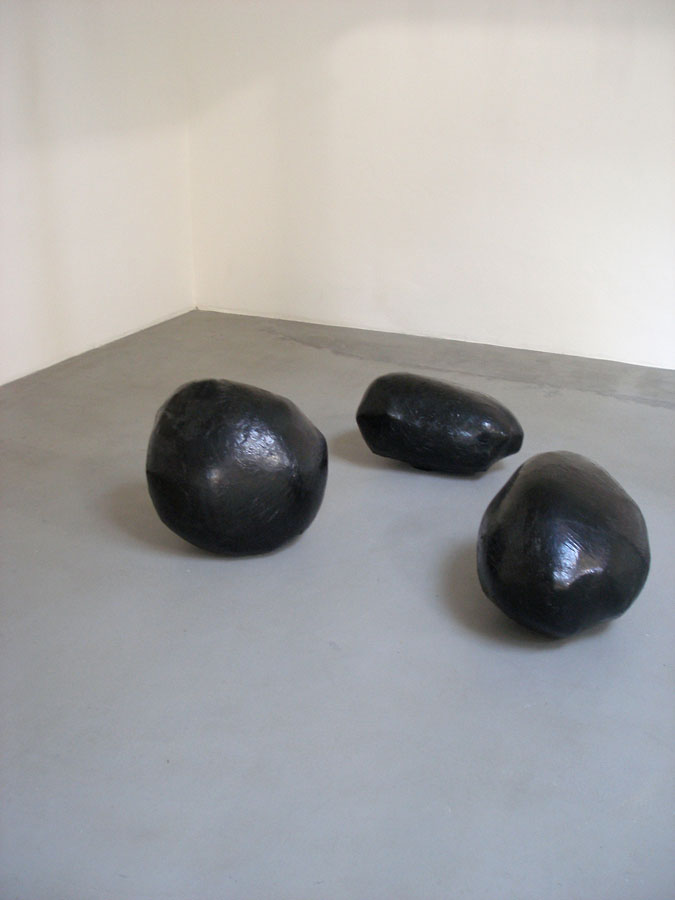Isofollies (Ikon gallery) 2006, technique mixte / mixed media
Suchan Kinoshita participe à l’exposition Tussenbeelden organisée par Schunck* à Heerlen (Pays-Bas)
Kunstenaar en gastcurator Paul van der Eerden (1954) heeft op uitnodiging van SCHUNCK* een bijzondere selectie van werken bijeengebracht in de tentoonstelling TUSSENBEELDEN.
De rode draad in de expositie is de rol van het beeld als bemiddelaar tussen de aardse en bovennatuurlijke wereld in verschillende culturen. Zoals Afrikaanse of Aziatische objecten als bemiddelaar of afweerder van onbeheersbare krachten kunnen fungeren, is er in de westerse religieuze traditie een vergelijkbare omgang met heiligenbeelden en devotieprenten als ritueel object.
Ook in de moderne en hedendaagse kunst bestaat er een fascinatie van kunstenaars om een ‘zuiver’ beeld te creëren. Met als doel een grote emotie of sublieme ervaring op te roepen, die te vergelijken is met een spirituele of religieuze beleving.
TUSSENBEELDEN plaatst de hedendaagse kunst in een context van Afrikaanse voorouderverering en Europese heiligenbeelden. Deze spelen traditioneel een bemiddelende rol in de relatie tussen de mens en een hogere vorm van zijn. Door de moderne kunst in deze context te plaatsen, wordt de vraag opgeroepen of ook de moderne en hedendaagse kunst de rol als bemiddelaar tussen de kijker en een vorm van transcendentie of spiritualiteit kan spelen?
Il y a quelques mois, à l’occasion de l’exposition Locus Solus à l’Institut de Carton à Bruxelles, Paul van der Eerden écrivait à propos des Isofollies de Suchan Kinoshita :
About Kinoshita’s Isofollies and Bambara
(…) When I first saw the Kinoshita’s Isofollies, they seemed familiar to me even though I had never seen them before. They reminded me of the objects the Bambara from Mali call Boli. Bolis are sacred objects that are seen as the accumulations of secret knowledge accessible only to the initiated. They are containers for the collective memory and for the history of the tribe. The Bambara take care of them, ‘nourishing’ them with libations of blood, millet beer and other substances that enhance the Boli’s power. Their surface is a closed and impregnable crust of different materials. To the initiated, they have a presence that goes beyond the object itself: they are real, and as such they not only take up their actual space, as objects, they also occupy a mental space in the memory and ideas of the people. Kinoshita’s Isofollies have the same closed appearance: they look like mysterious aliens. And, when you encounter them for the first time, you only can guess about the actual content of the work, or about its meaning. The Isofollies are containers of debris, leftovers from previous shows that Kinoshita has now wrapped in plastic. Like the Bolis, they are accumulations of material, and they capture their own space. They clearly don’t want to be realistic sculptures, but they are what sculptor Tony Smith calls ‘presences’. They don’t question the nature of sculpture, just as the Bolis don’t question ‘art’, but they are present, they occupy their own space, in reality and in the memory or conscience of the viewer. And so, in my memory, I had an image of a Boli I had seen somewhere. And although memory isn’t reality, it is felt or experienced as real. I had never seen the Isofollies before, but, in the associations they prompted in my mind with objects of a different nature, they became familiar, real.(…)
Vernissage le vendredi 6 juin à 17h
Exposition du 7 juin au 7 septembre
Schunck* Glaspaleis, museumzaal, Heerlen.
[sociallinkz]
